Laing is a classic dish from the Bicol region, where dried taro leaves are slowly cooked in coconut milk, seasoned with shrimp paste and spiced up with chilies. This combination creates a creamy, mildly spicy dish that many consider the ultimate comfort food.
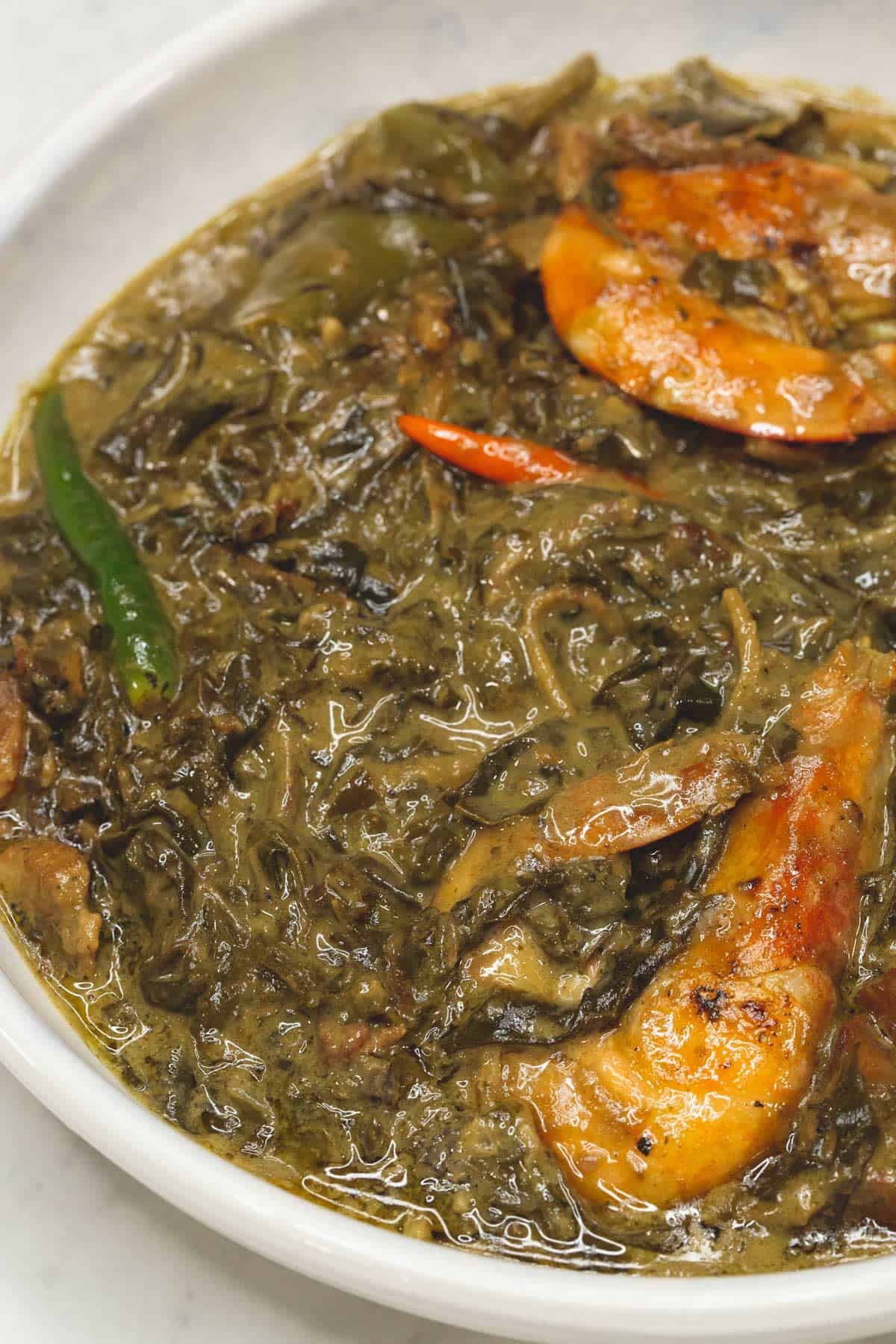
Jump to:
What is Laing?
Laing is a traditional dish from the Bicol province of the Philippines. This laing recipe is made with dried taro leaves, also known as gabi leaves. If you're not familiar, gabi leaves are somewhat like kale or collard greens but have their unique characteristics.
They're chopped into small pieces and simmered in coconut milk for a creamy texture, then spiced up with labuyo, a small and fiery chili pepper that's a staple in the region.
Ingredients you'll need
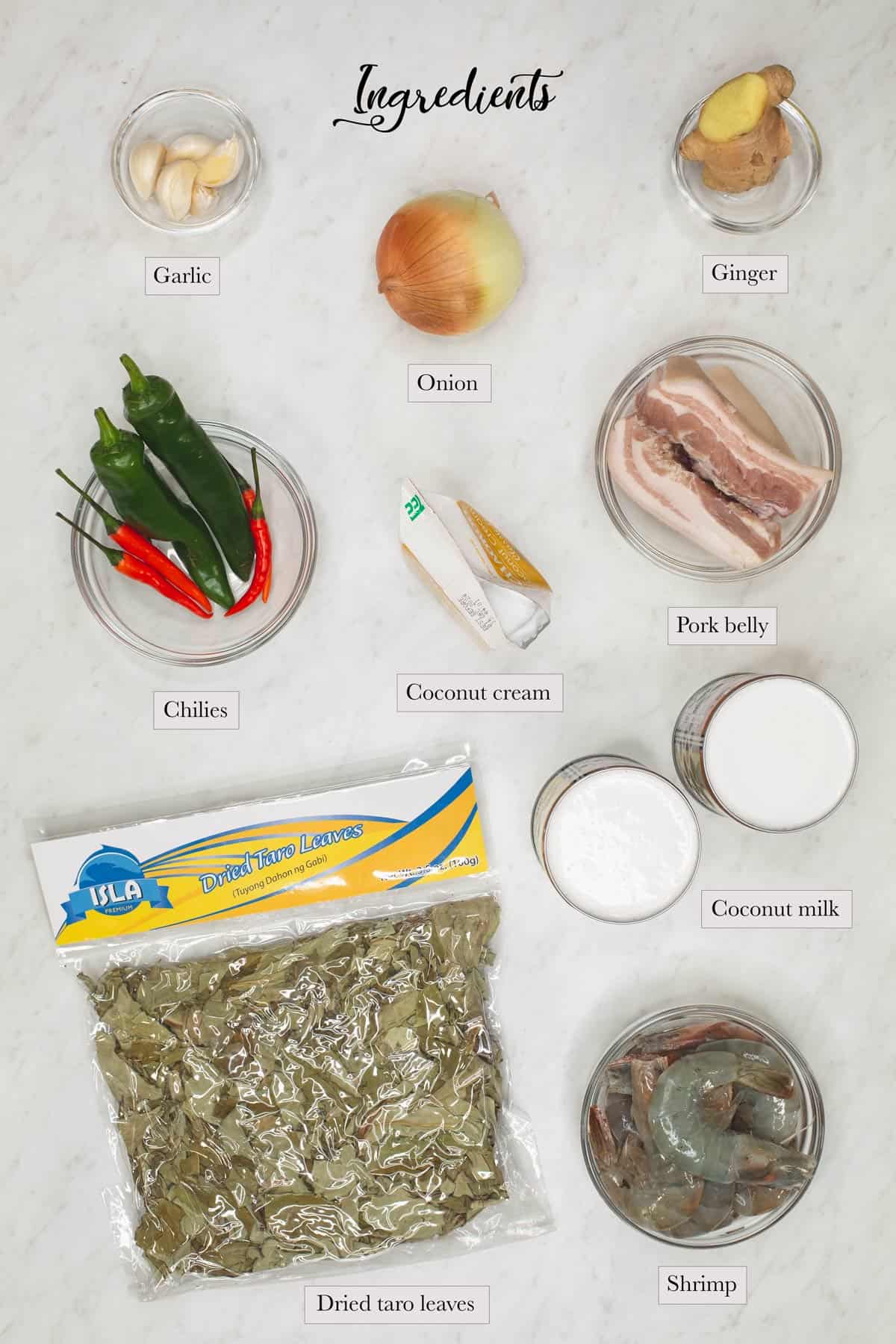
Notes and substitutions
- Taro leaves: You can use either fresh whole taro leaves or dried ones. Just remember to handle the leaves carefully to avoid irritation.
- Proteins: I used shrimp and pork for this recipe; You can use another protein, like smoked fish, dried fish, or chicken. Each one works well, so feel free to mix it up depending on what you prefer or have on hand.
- Coconut milk: I used both coconut milk and cream for a rich, creamy texture. You'll need 2 (13.5-oz each) cans of coconut milk and 1 (13.5-oz) can of coconut cream, amounting to about 5 cups of coconut milk.
- Shrimp paste: This key ingredient really brings out that savory, seafood flavor to the dish. I typically use sautéed shrimp paste, which I always have in my fridge. You can also go for the raw variety or throw in some dried or smoked fish to add an extra layer of umami.
How to make this recipe
Step 1: Prepare taro leaves
For fresh taro leaves, gently pull them away from the thick veins or stems. Lightly rinse them in a colander under running water, being careful not to agitate them too much to prevent any irritants from being released. Set aside.
If you're using dried taro leaves, cut them into smaller pieces. It's usually not necessary, but if you prefer, you can rinse them similarly.
PRO TIP: Be careful when handling taro leaves because they contain calcium oxalate crystals, which can cause an irritating sensation. Do not stir them too vigorously or handle them roughly, as this can release more crystals and make your mouth and throat itchy. Cook the leaves thoroughly to break down these crystals, making sure they are safe and enjoyable to eat.

Step 2: Prepare shrimp
To devein the shrimp, make a small cut along the back near the tail. Use a toothpick or skewer to gently pull out the long, dark vein. Then, snip off the sharp part just below the eyes. Season them with salt and pepper.
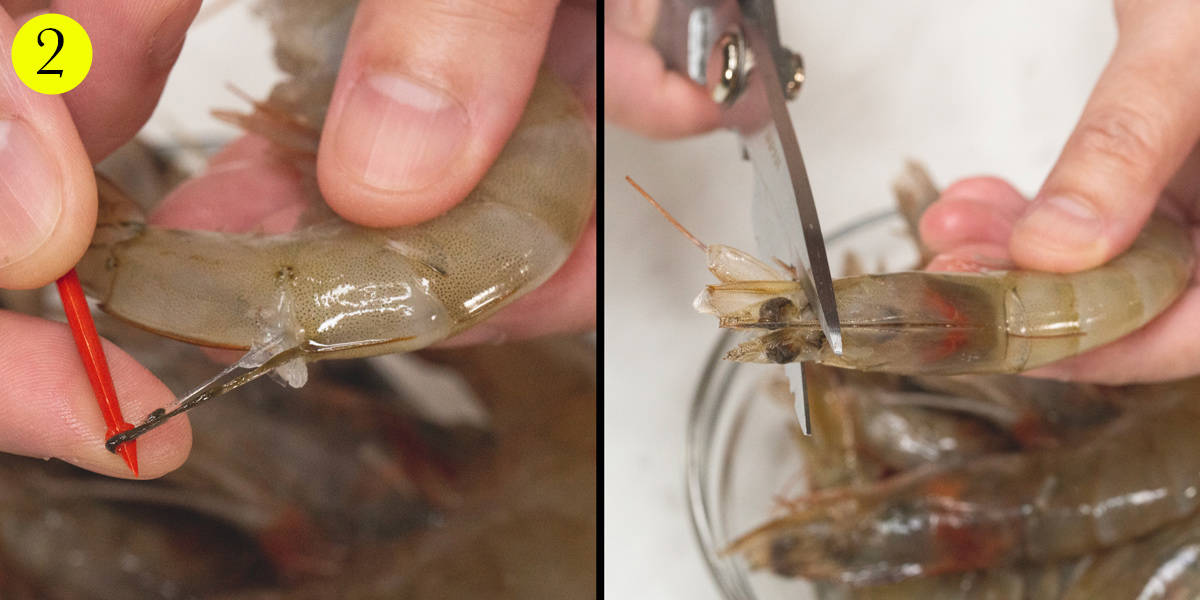
Step 3: Sear the shrimp
Heat a little oil in a sauté pan or shallow pot over high heat. Quickly sear the shrimp on both sides just until they turn color. Then transfer them to a plate.
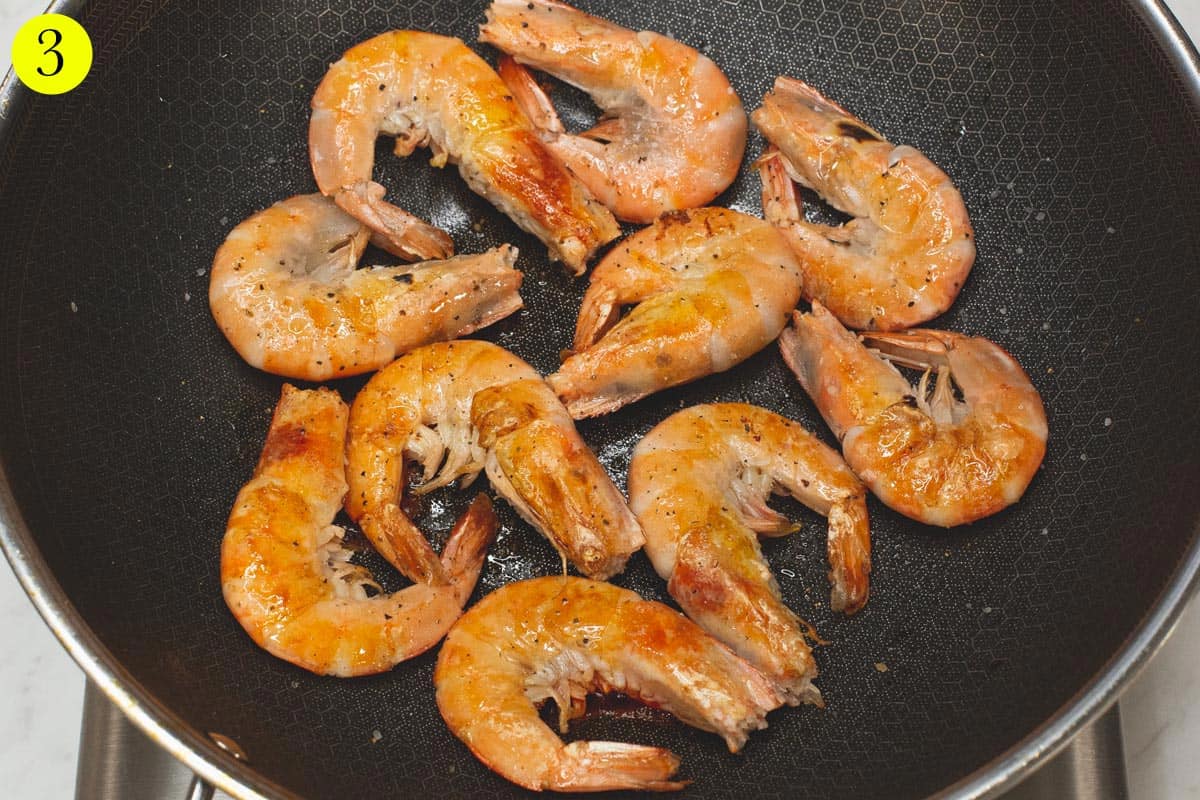
Step 4: Brown the pork
Place the pork in the pan with a splash of water. Cook it over medium heat to brown and let it crisp up as the fat renders out.
Season with salt and add a bit more oil if necessary. When it's browned and crispy, move the pork to one side of the pan.
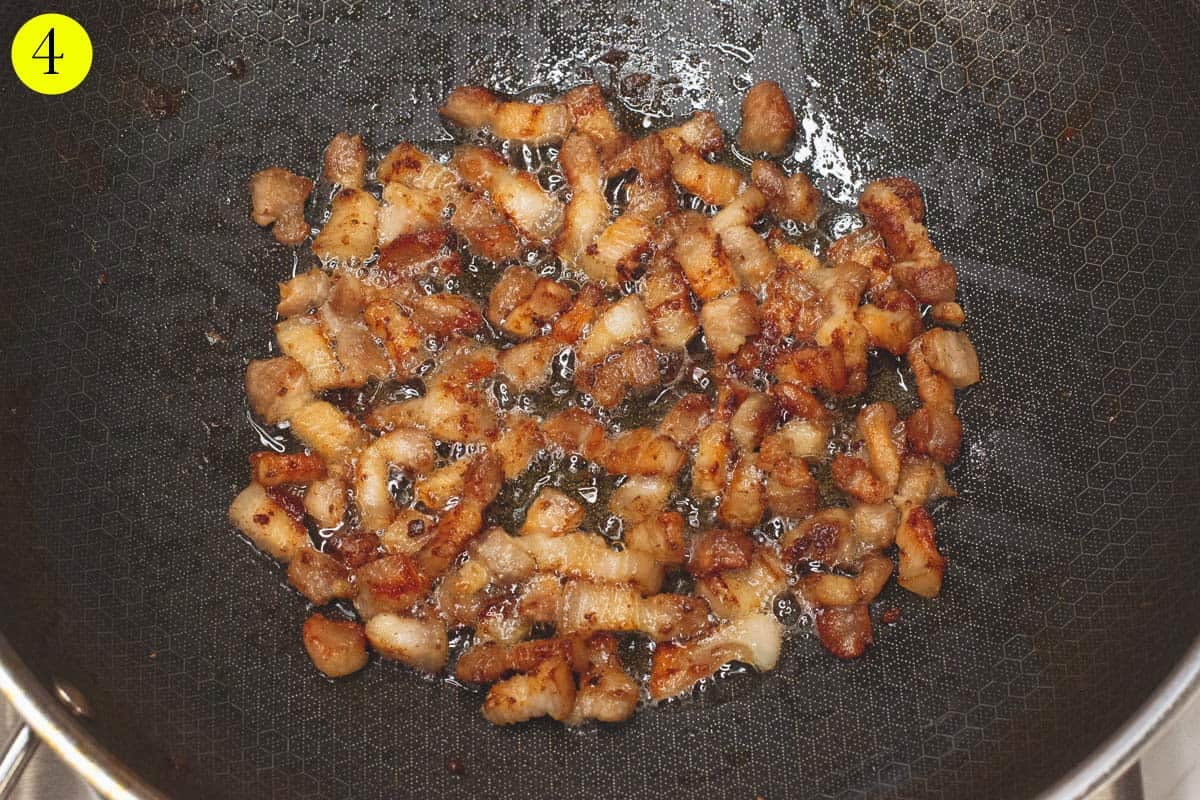
Step 5: Sauté aromatics
Sauté the ginger until it turns lightly brown. Then, add the minced garlic and chopped onions, cooking them until they soften.
Toss in your whole or sliced chilies. Sauté them until they blister, which adds flavor and reduces their heat.
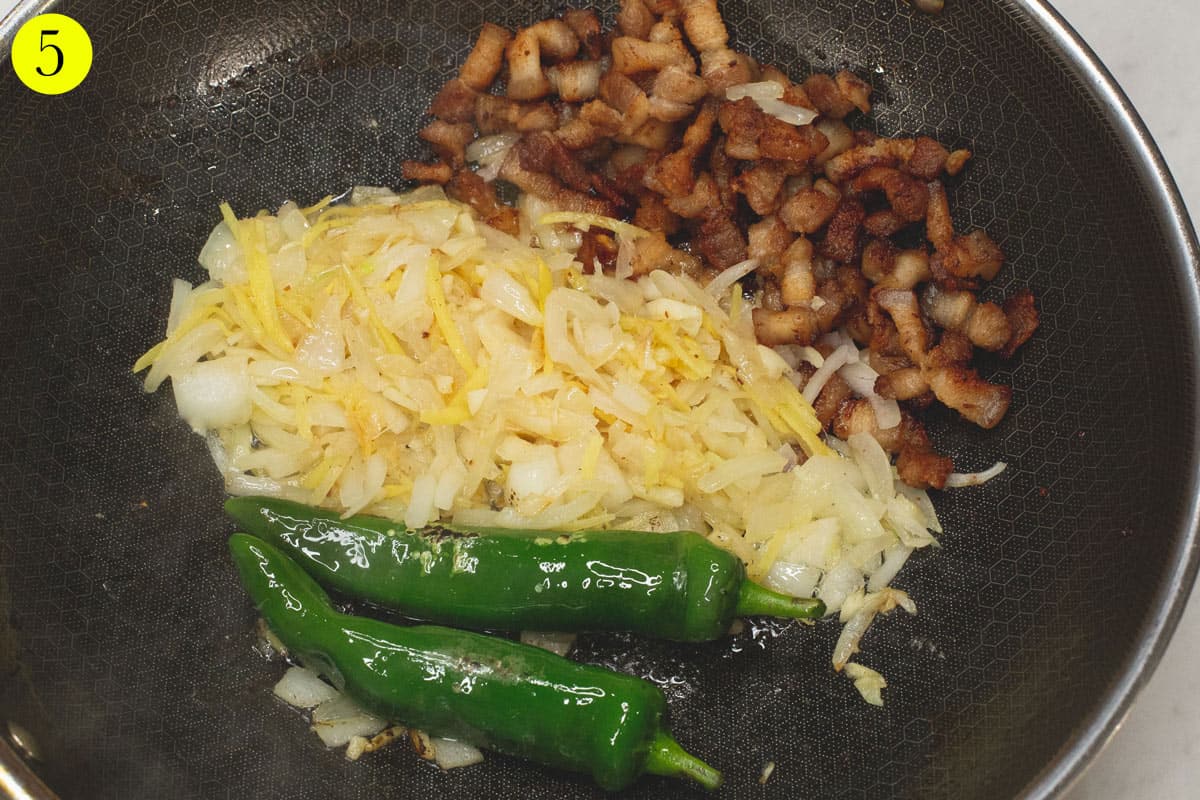
Step 6: Add shrimp paste
Stir in the shrimp paste and mix it well with the aromatics and pork.
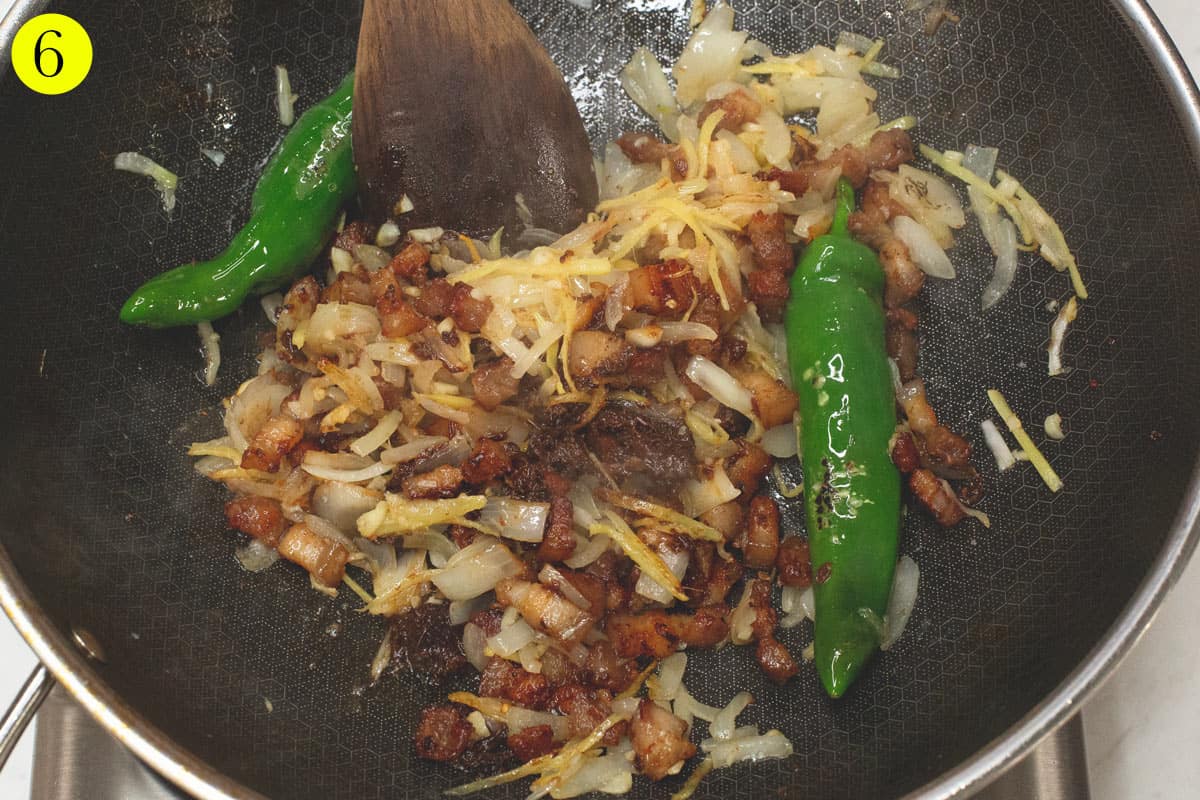
Step 7: Add coconut milk and cream
Add both the coconut milk and coconut cream. Stir everything together and scrape the bottom to release any flavorful bits. Turn up the heat and let it come to a boil.
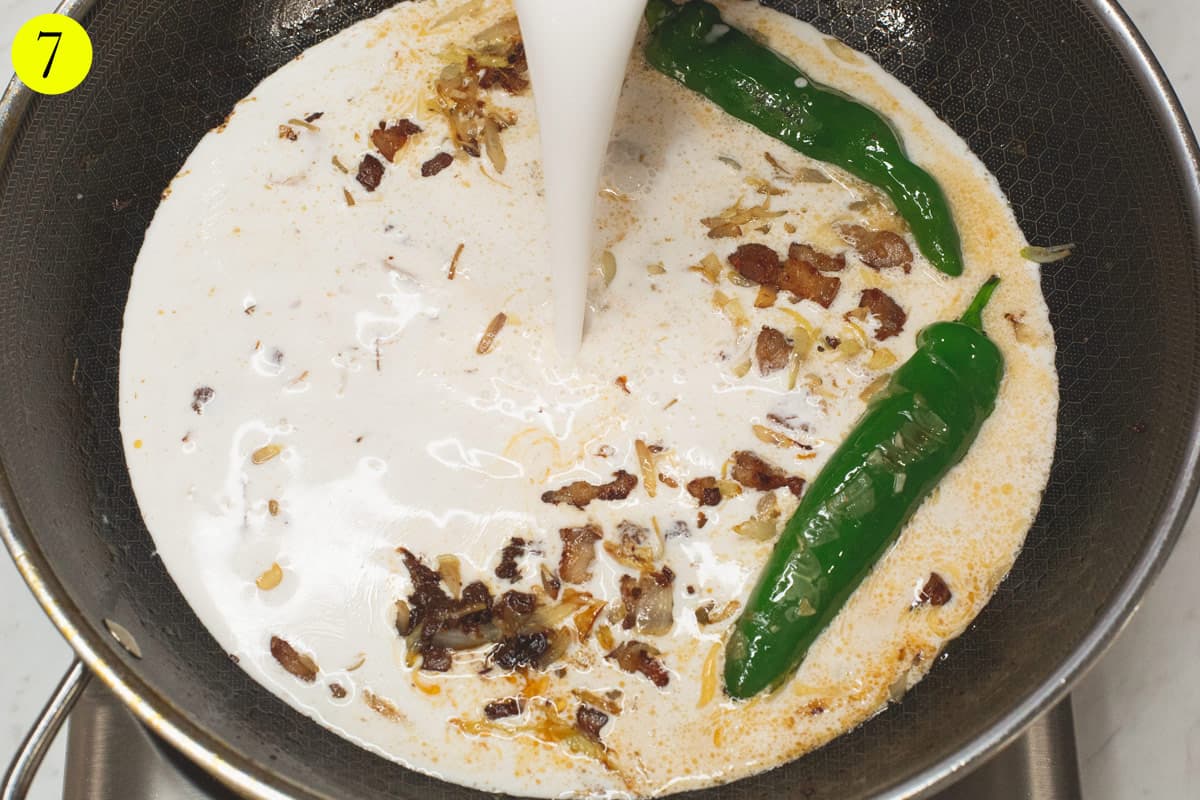
Step 8: Add taro leaves
Carefully add the taro leaves to the boiling coconut mixture, pressing them down gently to submerge. Cover and simmer over medium heat for 30 minutes.
Do not stir or touch them during this time; the steam will wilt and cook down the leaves. It's important to handle the leaves gently and cook them thoroughly to avoid any itchy sensation.
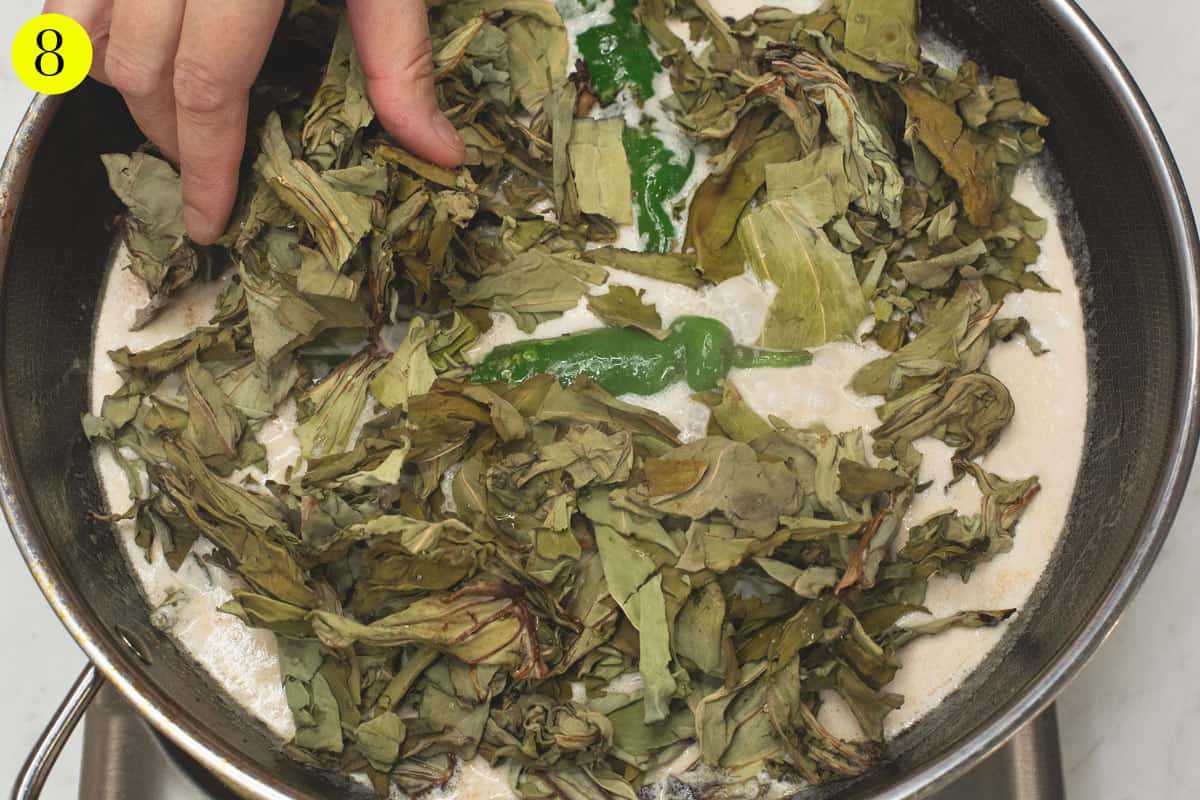
Step 9: Add the shrimp
Add the seared shrimp, submerging them into the mixture. If you like more heat, feel free to add extra chilies at this point. Cover and cook for another 10 minutes.
Check the sauce; if it hasn't thickened to your liking, continue cooking uncovered until it reaches your desired consistency. At this point, you can stir the mixture.
Taste and adjust the seasoning with fish sauce or patis, salt, and pepper as needed. Turn off the heat.
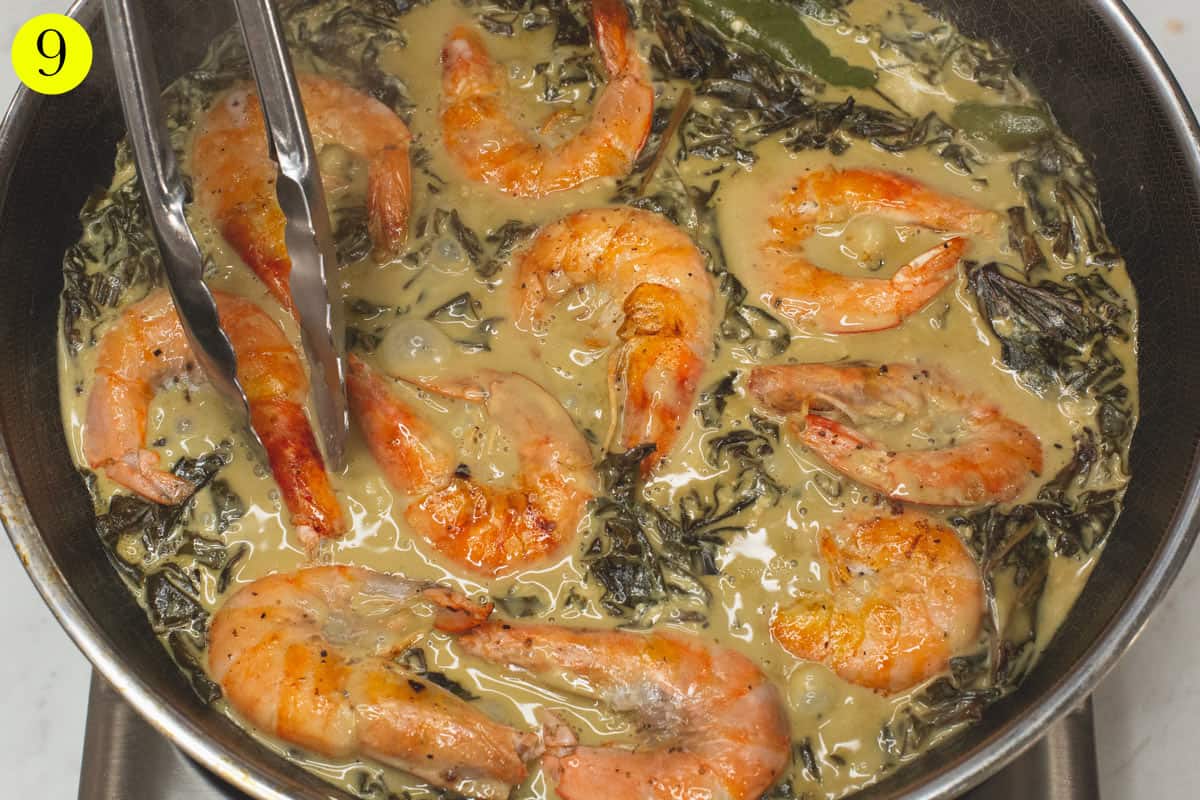
Serve and enjoy your Laing with steamed rice or Sinangag!
Leftovers can be stored in airtight containers in the fridge and are delicious when reheated. You can also freeze them to extend their shelf life.
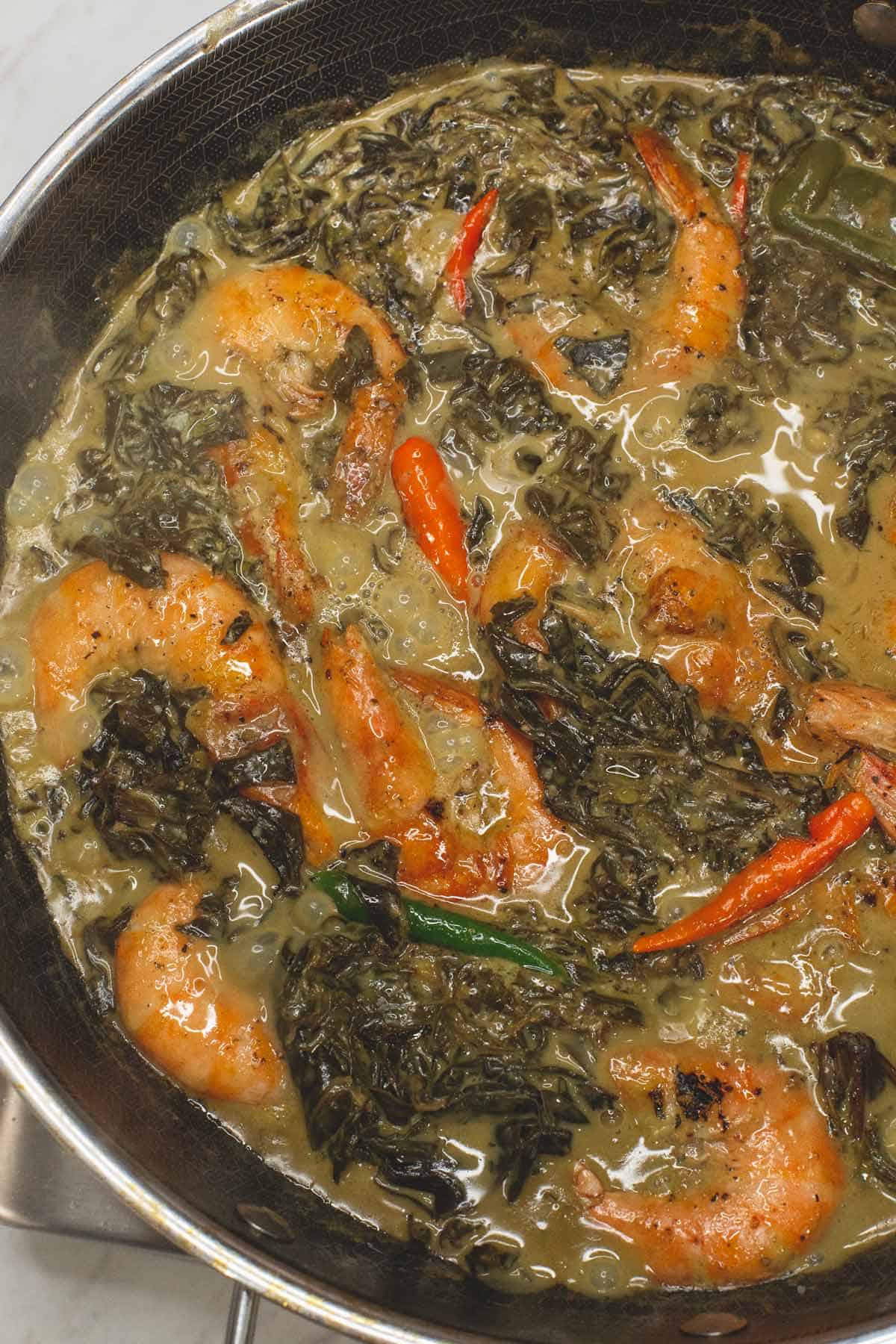
Recipe FAQs
Laing is a regional dish with taro leaves cooked in coconut milk with shrimp paste and chili peppers. Pork, shrimp, or smoked fish are often added for extra flavor. This vegetable dish is creamy and spicy, best enjoyed with steamed rice.
Handle taro leaves gently and cook them thoroughly. This is important to prevent irritation in the mouth or throat since these leaves contain calcium oxalate crystals that can cause itchiness.
Yes, Laing freezes well. Store it in an airtight container and freeze for up to 3 months. Thaw and reheat before serving.
Explore more recipes with coconut milk
- Ginataang Manok: Chicken cooked in coconut milk with aromatics.
- Bicol Express: A spicy pork dish with shrimp paste and coconut milk.
- Ginataang Gulay: Vegetables (like squash, ampalaya, yardlong beans, and eggplant) cooked with coconut milk and proteins.
- Ginataang Tilapia: Tilapia cooked with coconut milk sauce, aromatics, and spinach or mustard leaves.
- Kaldereta sa Gata: A variation of the classic Beef Caldereta with coconut milk.
- Ginataang Alimasag: Crabs cooked with coconut milk, aromatics, and sometimes malunggay leaves.
- Ginataang Puso ng Saging: Sliced banana blossoms with pork and shrimp, cooked in coconut milk.
Other vegetable recipes you may like

Did you make this recipe? I would love to know! Your feedback helps me make better recipes. Please rate, review, or comment below. Questions about this recipe are welcome, too!
Let's connect on Facebook, Instagram, Pinterest, TikTok, Twitter, and Youtube. Be sure to tag me when you try any of my recipes @recipesbynora!
📖 Recipe
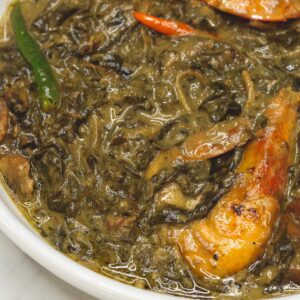
Laing
Equipment
- Wok, sauté pan, or shallow pot
Ingredients
- 3.5 ounces dried taro leaves (dahon ng gabi) see note
- 8 ounces shell-on shrimp deveined; see note
- 8 ounces pork belly or shoulder sliced; see note
- 3 tablespoons finely julienned ginger
- 6 garlic cloves minced
- 1 medium yellow or red onion chopped
- 2 tablespoons shrimp paste raw or sautéed
- 2 (13.5-oz) cans coconut milk see note
- 1 (13.5-oz) can coconut cream see note
- 2-4 green or red chili pepeprs adjust to taste
- Fish sauce, salt, and pepper adjust to taste
- Neutral oil for searing and sautéing
Instructions
- For fresh taro leaves, gently pull them apart from the thick veins or stems. Rinse in a colander without agitating them to avoid releasing any irritants. For dried taro leaves, cut into smaller pieces and rinse similarly.
- To devein the shrimp, make a small cut along the back near the tail. Use a toothpick or skewer to gently pull out the long, dark vein. Then, snip off the sharp part just below the eyes. Season them with salt and black pepper before cooking.
- Heat a little oil in a sauté pan or shallow pot over high heat. Quickly sear the shrimp on both sides just until they turn color. Then transfer them to a plate.
- Add the pork with a splash of water. Cook over medium heat to brown and crisp it up, letting the fat render.Season with salt and add a bit more oil if necessary. When it's browned and crispy, move the pork to one side of the pan.
- Sauté ginger until lightly browned. Add garlic and onion, then sauté until softened. Add the chilies and sauté until blistered.
- Stir in the shrimp paste, mixing it well with the aromatics and pork.
- Add both coconut milk and coconut cream. Mix while scraping the bottom to release any flavorful bits. Turn up the heat and let it come to a boil.
- Add taro leaves, gently pressing them down to submerge. Cover and simmer over medium heat for 30 minutes.Do not stir or touch them during this time; the steam will wilt and cook down the leaves. Handle them gently and cook them thoroughly to avoid any itchy sensation.
- Add the seared shrimp and add extra chillies, if you like more heat. Cover and cook for another 10 minutes.Check the sauce; if it hasn't thickened to your liking, continue cooking uncovered until it reaches your desired consistency. At this point, you can stir the mixture. Taste and adjust the seasoning with fish sauce, salt, and pepper as needed. Turn off the heat.
Notes
- Taro leaves: You can use either fresh whole taro leaves or dried ones. Just remember to handle the leaves carefully to avoid irritation.
- Proteins: I used shrimp and pork for this recipe; Yo can use another protein, like smoked fish, dried fish, or chicken. Each one works well, so feel free to mix it up depending on what you prefer or have on hand.
- Coconut milk: I used both coconut milk and cream for a rich, creamy texture. You'll need 2 (13.5-oz each) cans of coconut milk and 1 (13.5-oz) can of coconut cream, amounting to about 5 cups coconut milk.
- Shrimp paste: This key ingredient really brings out that savory, seafood flavor to the dish. I typically use sautéed shrimp paste, which I always have in my fridge. You can also go for the raw variety or throw in some dried or smoked fish to add an extra layer of umami.











Lenore
Very delicious. Thank you i made it last night!
Nora Reyes
That's great. Thanks, Lenore!